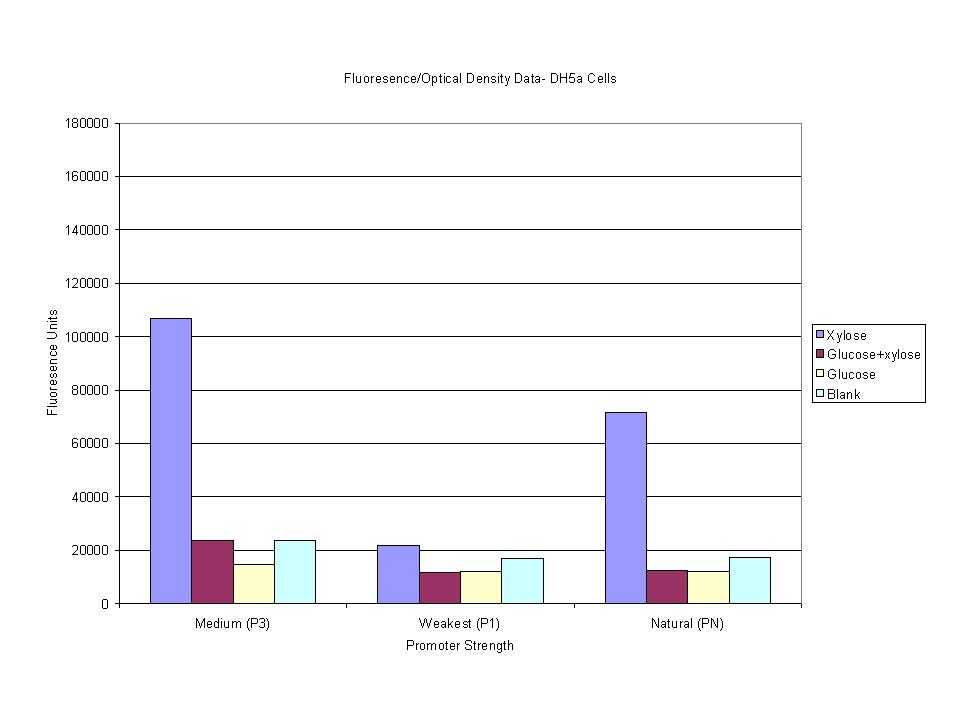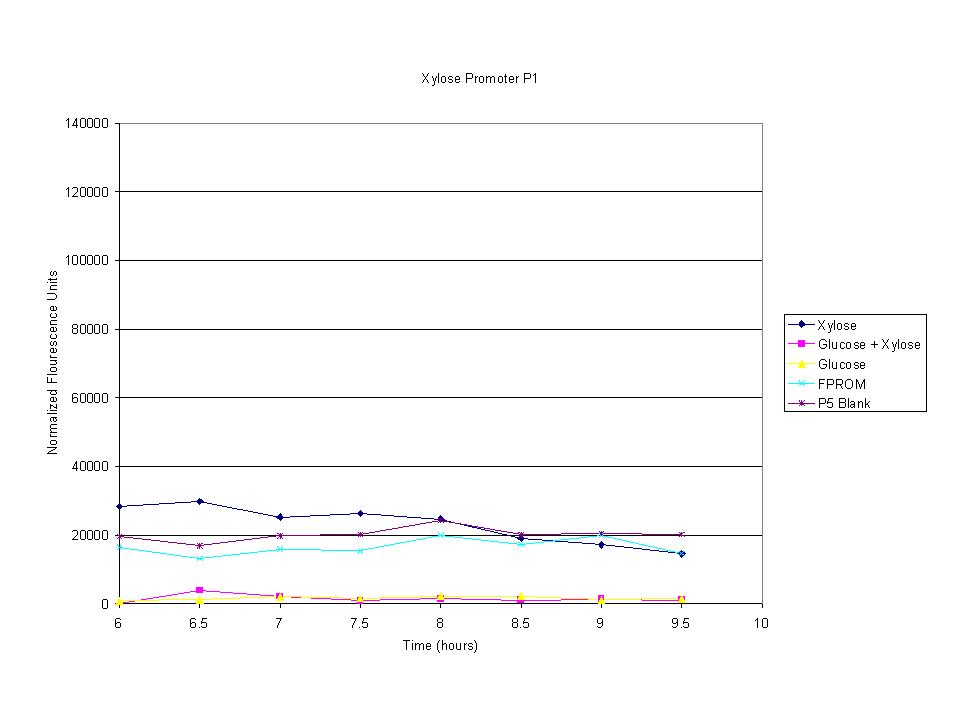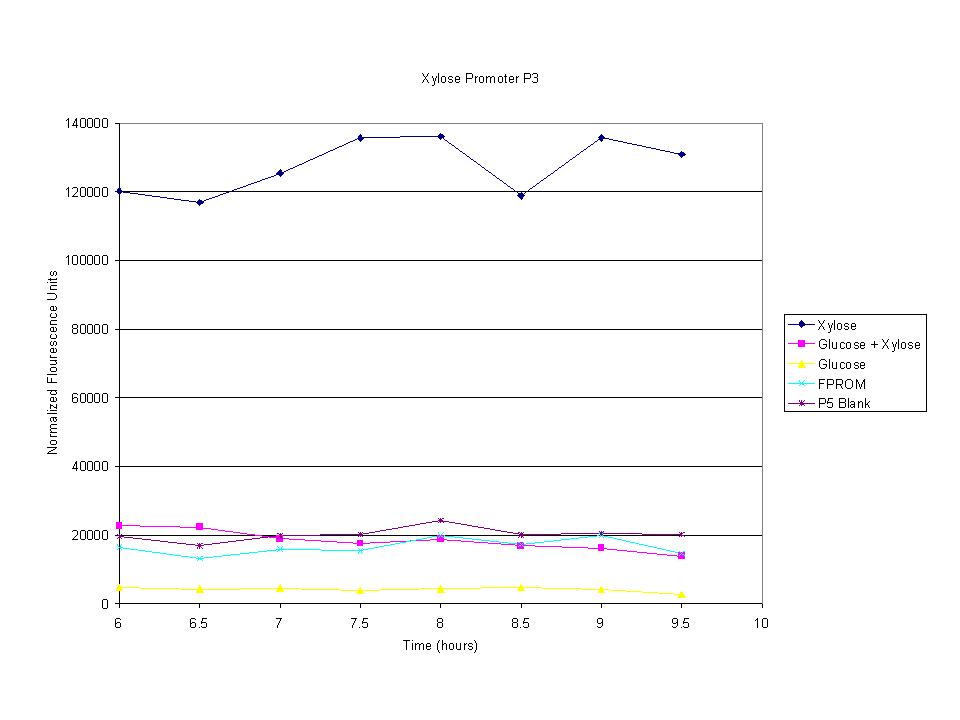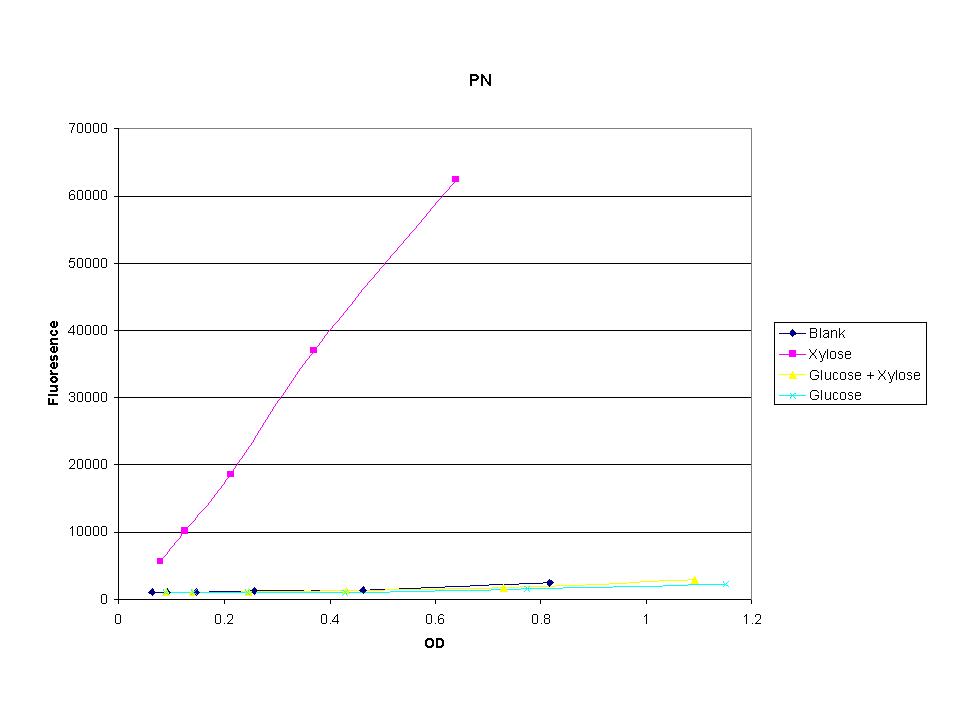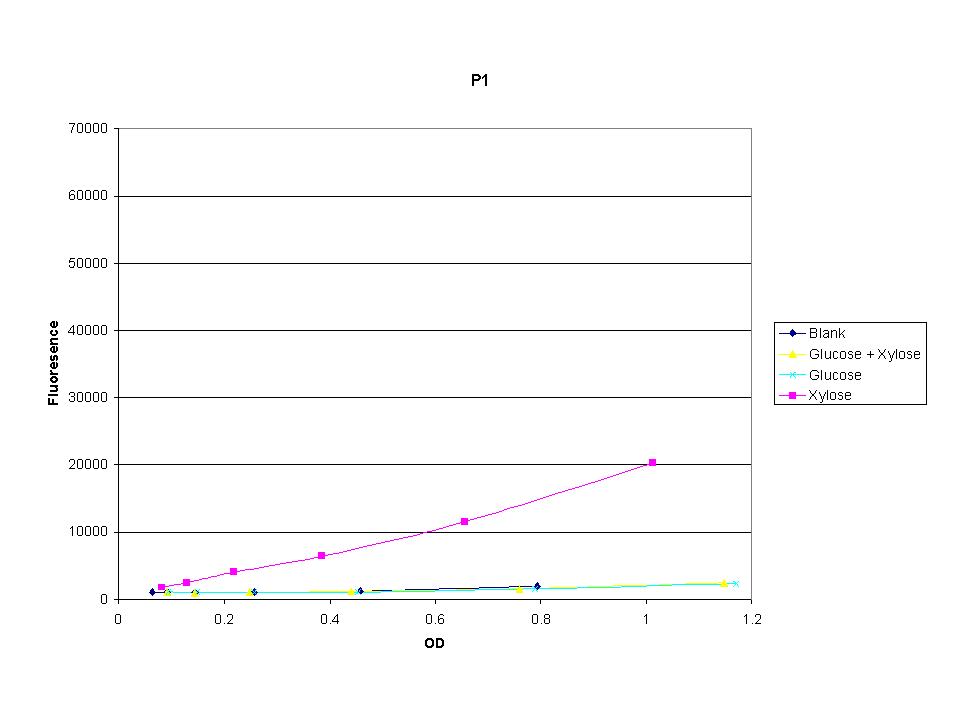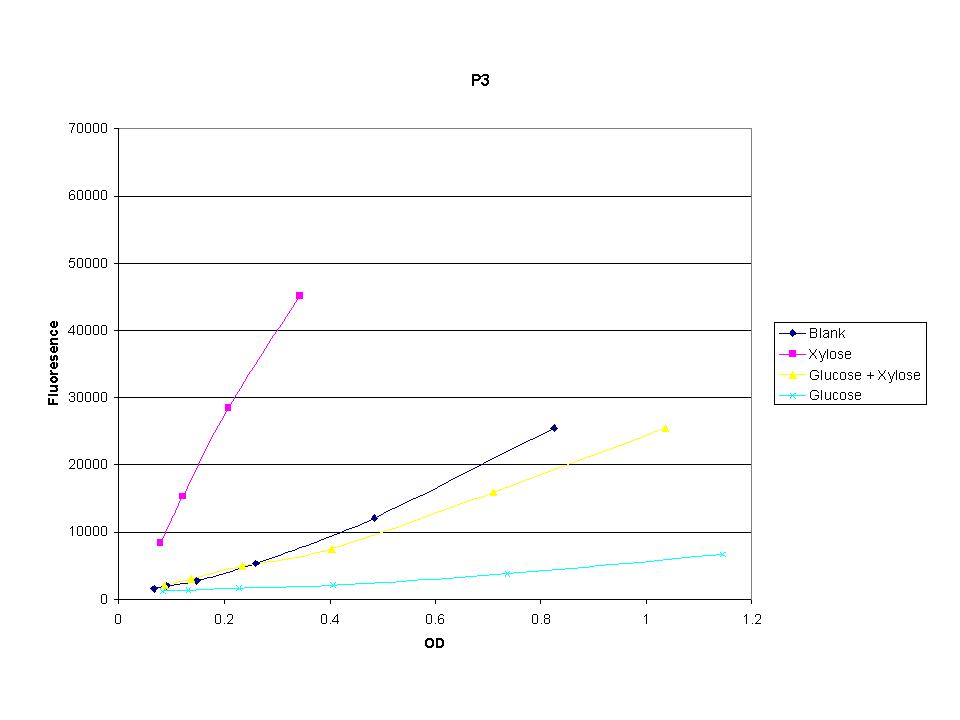Team:PennState/diauxie/progress
From 2008.igem.org
| Line 191: | Line 191: | ||
<p>Tests were then run to compare the levels of induction with various mixes of xylose, glucose and xylose+glucose. The goal was to obtain a noticeably higher level of induction with the xylose/glucose mixture when compared to the wild-type construct.</p> | <p>Tests were then run to compare the levels of induction with various mixes of xylose, glucose and xylose+glucose. The goal was to obtain a noticeably higher level of induction with the xylose/glucose mixture when compared to the wild-type construct.</p> | ||
| + | |||
| + | <table> <!-- this table separates content into column-like quadrants --> | ||
| + | <tr> | ||
| + | <td style="padding-top:30px; padding-right:30px" valign="top" width="45%"><h4>"Smart Fold" Pthalate Biosensor</h4> | ||
| + | <hr /> | ||
</div> | </div> | ||
<div id="psugallery" style="float: right; clear: right; width: 500px;"> | <div id="psugallery" style="float: right; clear: right; width: 500px;"> | ||
| Line 197: | Line 202: | ||
<div class="gallerytext"><p>DH5a fluoresence</p></div> | <div class="gallerytext"><p>DH5a fluoresence</p></div> | ||
</div> | </div> | ||
| - | + | ||
| + | </td> | ||
| + | |||
| + | <td style="padding-top:30px; padding-right:30px" valign="top" width="45%"><h4>"Nuclear Fusion" BPA Biosensor</h4> | ||
| + | <hr /> | ||
</div> | </div> | ||
<div id="psugallery" style="float: right; clear: right; width: 500px;"> | <div id="psugallery" style="float: right; clear: right; width: 500px;"> | ||
| Line 204: | Line 213: | ||
<div class="gallerytext"><p>W3110 fluoresence</p></div> | <div class="gallerytext"><p>W3110 fluoresence</p></div> | ||
</div> | </div> | ||
| + | |||
| + | |||
| + | </p></td> | ||
| + | </tr> | ||
| + | </table> | ||
<p>These graphs show the normalized fluoresence strength for PN, P1, and P3 xylose promoters induced with xylose, glucose, and a mixture. The W3110 cells have <em>xylE</em> and <em>xylG</em> knocked out while DH5α still contain the natural xylose transport and metabolim. This data shows that there is little effect on the fluorescence intensity using strains with <em>xylE</em> and <em>xylG</em> sequences deleted. Our next step is to transform these promoters into <em>E. coli</em> cells with deleted xylose metabolism and transporters. </p> | <p>These graphs show the normalized fluoresence strength for PN, P1, and P3 xylose promoters induced with xylose, glucose, and a mixture. The W3110 cells have <em>xylE</em> and <em>xylG</em> knocked out while DH5α still contain the natural xylose transport and metabolim. This data shows that there is little effect on the fluorescence intensity using strains with <em>xylE</em> and <em>xylG</em> sequences deleted. Our next step is to transform these promoters into <em>E. coli</em> cells with deleted xylose metabolism and transporters. </p> | ||
| + | <table> <!-- this table separates content into column-like quadrants --> | ||
| + | <tr> | ||
| + | <td style="padding-top:30px; padding-right:30px" valign="top" width="33%"><h4>"Smart Fold" Pthalate Biosensor</h4> | ||
| + | <hr /> | ||
</div> | </div> | ||
<div id="psugallery" style="float: right; clear: right; width: 500px;"> | <div id="psugallery" style="float: right; clear: right; width: 500px;"> | ||
| Line 214: | Line 232: | ||
</div> | </div> | ||
| + | |||
| + | </td> | ||
| + | |||
| + | <td style="padding-top:30px; padding-right:30px" valign="top" width="33%"><h4>"Nuclear Fusion" BPA Biosensor</h4> | ||
| + | <hr /> | ||
</div> | </div> | ||
<div id="psugallery" style="float: right; clear: right; width: 500px;"> | <div id="psugallery" style="float: right; clear: right; width: 500px;"> | ||
| Line 221: | Line 244: | ||
</div> | </div> | ||
| + | </td> | ||
| + | |||
| + | <td style="padding-top:30px; padding-right:30px" valign="top" width="33%"><h4>"Nuclear Fusion" BPA Biosensor</h4> | ||
| + | <hr /> | ||
</div> | </div> | ||
<div id="psugallery" style="float: right; clear: right; width: 500px;"> | <div id="psugallery" style="float: right; clear: right; width: 500px;"> | ||
| Line 227: | Line 254: | ||
<div class="gallerytext"><p>P3 induction time</p></div> | <div class="gallerytext"><p>P3 induction time</p></div> | ||
</div> | </div> | ||
| - | |||
| - | |||
| - | |||
| - | |||
| - | |||
| - | |||
| - | |||
| - | |||
| - | |||
| - | |||
| - | |||
| - | |||
| - | |||
| - | |||
| - | |||
| - | |||
| - | |||
| - | |||
| - | |||
| - | |||
| - | |||
| - | |||
| - | |||
| - | |||
| - | |||
| - | |||
| - | |||
| - | |||
| - | |||
| - | |||
| - | |||
| - | |||
| - | |||
| - | |||
| - | |||
| - | |||
| - | |||
| - | |||
| - | |||
| - | |||
</td> | </td> | ||
| - | |||
| - | |||
| - | |||
| - | |||
| - | |||
| - | |||
| - | |||
| - | |||
| - | |||
| - | |||
</p></td> | </p></td> | ||
| Line 283: | Line 260: | ||
</table> | </table> | ||
| - | <p> | + | <p>The cells were induced iduced with sugars and then allowed to grow with sample being removed every half hour. The goal was to find the induction time where fluorescence starts to level off. The intensity has leveled off and begins to drop after 7.5 hours so this was the growth time for all future tests. |
| + | </p> | ||
| + | |||
| + | |||
<table> <!-- this table separates content into column-like quadrants --> | <table> <!-- this table separates content into column-like quadrants --> | ||
| Line 292: | Line 272: | ||
<div id="psugallery" style="float: right; clear: right; width: 500px;"> | <div id="psugallery" style="float: right; clear: right; width: 500px;"> | ||
<div class="gallerybox" style="width: 155px; float: left; clear: none;"> | <div class="gallerybox" style="width: 155px; float: left; clear: none;"> | ||
| - | <div class="thumb" style="padding: 18px 0pt; width: 150px;"><div style="margin: auto; width: 120px;"><a href="/Image: | + | <div class="thumb" style="padding: 18px 0pt; width: 150px;"><div style="margin: auto; width: 120px;"><a href="/Image:PN_linear_penn_state08.jpg" class="image" title="PN_linear_penn_state08.jpg"><img alt="" src="/wiki/images/f/fb/PN_linear_penn_state08.jpg" border="0" height="110" width="120"></a></div></div> |
| - | <div class="gallerytext"><p>PN | + | <div class="gallerytext"><p>PN linear range</p></div> |
</div> | </div> | ||
| Line 304: | Line 284: | ||
<div id="psugallery" style="float: right; clear: right; width: 500px;"> | <div id="psugallery" style="float: right; clear: right; width: 500px;"> | ||
<div class="gallerybox" style="width: 155px; float: left; clear: none;"> | <div class="gallerybox" style="width: 155px; float: left; clear: none;"> | ||
| - | <div class="thumb" style="padding: 18px 0pt; width: 150px;"><div style="margin: auto; width: 120px;"><a href="/Image: | + | <div class="thumb" style="padding: 18px 0pt; width: 150px;"><div style="margin: auto; width: 120px;"><a href="/Image:P1_linear_penn_state08.jpg" class="image" title="P1_linear_penn_state08.jpg"><img alt="" src="/wiki/images/c/c9/P1_linear_penn_state08.jpg" border="0" height="110" width="120"></a></div></div> |
| - | <div class="gallerytext"><p>P1 | + | <div class="gallerytext"><p>P1 linear range</p></div> |
</div> | </div> | ||
| - | |||
</td> | </td> | ||
| Line 315: | Line 294: | ||
<div id="psugallery" style="float: right; clear: right; width: 500px;"> | <div id="psugallery" style="float: right; clear: right; width: 500px;"> | ||
<div class="gallerybox" style="width: 155px; float: left; clear: none;"> | <div class="gallerybox" style="width: 155px; float: left; clear: none;"> | ||
| - | <div class="thumb" style="padding: 18px 0pt; width: 150px;"><div style="margin: auto; width: 120px;"><a href="/Image: | + | <div class="thumb" style="padding: 18px 0pt; width: 150px;"><div style="margin: auto; width: 120px;"><a href="/Image:P3_linear_penn_state08.jpg" class="image" title="P3_linear_penn_state08.jpg"><img alt="" src="/wiki/images/f/f5/P3_linear_penn_state08.jpg" border="0" height="110" width="120"></a></div></div> |
| - | <div class="gallerytext"><p>P3 | + | <div class="gallerytext"><p>P3 linear range</p></div> |
</div> | </div> | ||
</td> | </td> | ||
| Line 324: | Line 303: | ||
</table> | </table> | ||
| - | <p>The | + | <p>The three promoters analyzed show linear behavior in the optical density range. The strength of fluorescence did change depending on the promoter. With this information we were able to accurately normalize fluorescence data. |
</p> | </p> | ||
| - | |||
| - | |||
| - | |||
Revision as of 01:51, 30 October 2008

| Home | The Team | The Project | Parts | Notebook |
Diauxie EliminationNHR Biosensors
|
Progress & Results
Each test construct (promoter + GFP) was cloned into the pSB1A2 plasmid and transformed into several E. coli strains: DH5α, W3110 ∆xylB-G, and W3110 ∆xylB-R. Preliminary induction studies were run to find the optimal induction time and to analyze the linear range for OD versus fluorescence. Test Construct![[Test Consturct]](https://static.igem.org/mediawiki/2008/1/1b/Test_construct.JPG)
These graphs show the normalized fluoresence strength for PN, P1, and P3 xylose promoters induced with xylose, glucose, and a mixture. The W3110 cells have xylE and xylG knocked out while DH5α still contain the natural xylose transport and metabolim. This data shows that there is little effect on the fluorescence intensity using strains with xylE and xylG sequences deleted. Our next step is to transform these promoters into E. coli cells with deleted xylose metabolism and transporters.
The cells were induced iduced with sugars and then allowed to grow with sample being removed every half hour. The goal was to find the induction time where fluorescence starts to level off. The intensity has leveled off and begins to drop after 7.5 hours so this was the growth time for all future tests.
The three promoters analyzed show linear behavior in the optical density range. The strength of fluorescence did change depending on the promoter. With this information we were able to accurately normalize fluorescence data. |
 "
"
